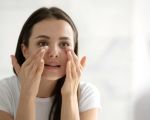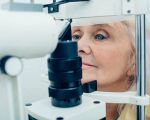- 1 - Importance-of-Eye-Health-for-Nurses
- 2 - Common-Causes-of-Eye-Strain-in-Nursing
- 3 - Practical-Tips-to-Prevent-Eye-Strain-in-Nurses
- 4 - Case-Study-Real-Life-Experience
- 5 - Professional-Advice-and-Tools-for-Eye-Care
1. The Importance of Eye Health for Nurses
Nurses play a vital role in healthcare, often working long hours under demanding conditions that require intense focus on screens, charts, and patient monitoring devices. These conditions can easily lead to eye strain, a common but often underestimated issue. Protecting eye health is essential not only for nurses' well-being but also for maintaining high standards of patient care. When nurses suffer from eye fatigue, it can decrease their concentration and increase the risk of errors.
Understanding the importance of eye care helps nurses prioritize their health and adopt habits that reduce strain. The nature of nursing, with continuous shifts and exposure to bright artificial lighting or harsh screen glare, makes them particularly vulnerable. Eye strain in nurses is not just an inconvenience—it’s a real occupational hazard.
2. Common Causes of Eye Strain in Nursing
Eye strain among nurses typically arises from a combination of factors. One major contributor is prolonged screen time. Electronic Health Records (EHR) and digital charting require nurses to focus on screens for hours, often in low light or with improper screen positioning.
Additionally, nurses frequently switch focus between near tasks (reading charts, screens) and far tasks (observing patients), which can tire the eye muscles. Poor workplace lighting—either too bright or dim—can cause pupils to work harder, increasing fatigue.
Environmental factors such as dry air in hospital wards or wearing masks that cause air to flow upward towards the eyes can also worsen dryness and irritation, compounding the problem. Together, these stressors create a challenging environment for maintaining optimal eye health.
3. Practical Tips to Prevent Eye Strain in Nurses
Preventing eye strain in nurses involves a combination of behavioral changes, workspace adjustments, and proper eye care routines. Here are some detailed strategies that can be easily incorporated into daily nursing routines:
3.1 Optimize Screen Usage
Position computer screens at eye level and about 20 to 28 inches away to reduce strain. Adjust brightness and contrast to comfortable levels, and use blue light filters or glasses designed to block harmful wavelengths.
3.2 Follow the 20-20-20 Rule
Every 20 minutes, take a 20-second break to look at something 20 feet away. This simple practice helps relax the eye muscles and reduces fatigue. Setting a timer or using apps can help nurses remember to take these micro-breaks during busy shifts.
3.3 Maintain Proper Lighting
Ensure adequate ambient lighting to reduce glare and avoid harsh contrasts between screen and surroundings. Where possible, use adjustable desk lamps that reduce shadows on charts or screens.
3.4 Hydrate and Use Artificial Tears
Dry eyes are a frequent complaint among nurses. Drinking plenty of water and using preservative-free artificial tears can alleviate dryness. Keeping the workplace humidified or wearing protective eyewear can also help.
3.5 Incorporate Eye Exercises
Simple exercises, such as rolling eyes slowly, focusing alternately on near and distant objects, or gently massaging the area around the eyes, can improve circulation and ease tension.
4. Case Study: Real-Life Experience of Nurse Sarah
Sarah, a registered nurse working in a busy urban hospital, struggled with persistent headaches and blurred vision after her shifts. She found herself rubbing her eyes frequently and feeling exhausted despite sufficient sleep. After consulting an eye care specialist, Sarah learned she was suffering from chronic eye strain.
By adopting ergonomic changes—adjusting her workstation, following the 20-20-20 rule, and using lubricating eye drops—she noticed significant improvement within weeks. Sarah's story highlights the importance of proactive eye care and shows that even small lifestyle changes can have a profound impact.
5. Professional Advice and Tools for Eye Care
Eye care professionals recommend regular comprehensive eye exams for nurses, especially those with existing vision problems or symptoms of strain. Using quality eye protection, like anti-glare glasses, can be crucial.
For nurses looking for tailored solutions, Eye Docs offers a range of products and services designed to address the unique challenges faced by healthcare professionals. Whether it's ergonomic eyewear or consultation on eye health, finding the right tools can make a lasting difference.
Prioritizing eye health is an investment in one’s career longevity and quality of life. Preventing eye strain not only improves comfort but also enhances alertness and overall job performance, key factors in demanding nursing roles.








